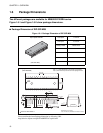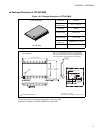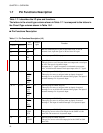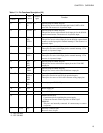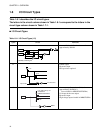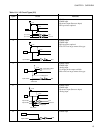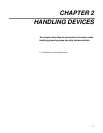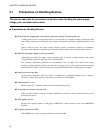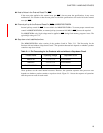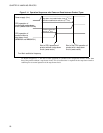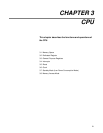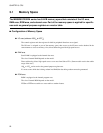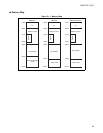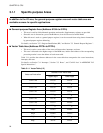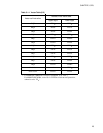
18
CHAPTER 2 HANDLING DEVICES
2.1 Precautions on Handling Devices
This section describes the precautions to be taken when handling the power supply
voltage, pins, and other device items.
■ Precautions on Handling Devices
● Ensure that the voltage does not exceed the maximum ratings. (Preventing latch-up)
A latch-up may occur if a voltage higher than Vcc or lower than Vss is applied to input or output pins other
than middle- or high-level resistant pins, or if voltage exceeding the rated value is applied between Vcc and
Vss.
When a latch-up occurs, the supply current increases rapidly, occasionally resulting in overheating.
Therefore, ensure that the voltage does not exceed the maximum ratings when using the microcontrollers.
● Stabilize the supply voltage as much as possible
Although the specified Vcc supply voltage operating range is assured, a sudden change in the supply
voltage within the specified range may result in a malfunction.
The following stabilization guidelines are recommended: The Vcc ripple (P-P value) at the supply
frequency (50 Hz to 60 Hz) should be less than 10% of the typical Vcc value, and the transient fluctuation
rate should be less than 0.1 V/ms at the time of momentary fluctuation when switching the power supply.
● Handling unused input pins
Leaving unused input pins open may result in a malfunction or equipment damage due to a latch-up.
Therefore, set these pins to pull-up or pull-down via resistors of 2 kΩ or higher.
● Handling the N.C. pins
Ensure that the N.C. (internally connected) pins are opened before using.
● Precautions on using an external clock
When an external clock is used, the oscillation stabilization wait time is also provided for power-on reset
and stop mode release.
● Wild register function
Because wild registers cannot be debugged on MB89V201, check operation on an actual MB89F202/
F202RA.
● Program execution on RAM
When MB89V201 is used, a program cannot be executed on RAM.



